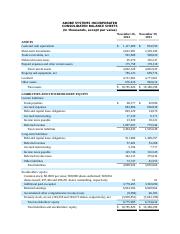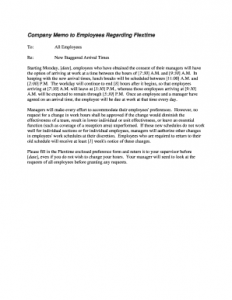
As a QuickBooks ProAdvisor, Mark has extensive knowledge of QuickBooks products, allowing him to create valuable content that educates businesses on maximizing the benefits of the software. Another reason QuickBooks Online stands out is its ability to calculate sales tax rates automatically based on the customer address, which is something Xero can’t do. Hence, it’s difference between turnover and revenue with table no surprise that QuickBooks Online is our overall best invoicing accounting software. Unfortunately, many don’t have positive experiences with QuickBooks’ customer support. One complained that they are often transferred to different departments when they contact QuickBooks. We believe the quality of customer service you’ll receive varies a lot based on the agent.
Ease of Use: QuickBooks Online Wins

If you need accounting tools but don’t know where to start (or can’t afford to pay for them yet), Wave is likely your best choice. We offer phone support, live chat and screen sharing, all free of charge. In this post, you have learned the main features of both Xero and Quickbooks and got a deep understanding of Xero vs Quickbooks. Each has a variety of functions to apply to rely on your particular requirements and offerings. Both of the platforms are some of the best Accounting Softwares in the Market.

When to choose QuickBooks Online
Finally, the “Uncleared Transactions” Report, which Accountants commonly run to show customers why their balance is lower than what is in the bank, is worth mentioning. In Xero, there’s no option to run this View from the Software’s Reports section. Furthermore, if you wish to run a Detailed Report on accounts receivable or payable, Xero does not provide a mechanism to total the Information by Client or Vendor. QuickBooks Online, on the other hand, makes it simple to get to this type of View. Reporting is one of the most significant Accounting Software elements for guiding Financial Strategy and Progress for your firm.
- You can use it to transfer data from multiple data sources into your Data Warehouse, Database, or a destination of your choice.
- This makes the tool as great for payment as for understanding your cash outflows.
- As with QuickBooks, you can use Xero to automatically import and categorize expenses.
- This is a different product than the ordinary accounting software, and it’s specially designed for service-based businesses which invoice for their time.
Pricing for Xero vs. QuickBooks

It’s designed specifically for small businesses and offers invoicing, time tracking and expense management. Quickbooks is a more scalable solution than Xero when it comes to bills and monthly invoices, which are both unlimited in all plans. Xero’s Early plan gives you 5 bills and 20 invoices and only offers unlimited invoices and bills starting in their second product tier. Xero vastly outperforms QuickBooks in its fixed asset management tools. With QuickBooks, you can record the purchase of a fixed asset, but with Xero, you can track fixed assets, calculate and track their depreciation, and much more.
Scalability and suitability for different business sizes

With QuickBooks, you’ll get expert product help from real people 7 days a week. Our specialists are here to support you with every part of your QuickBooks journey, from the initial switch to free 1 on 1 onboarding. Book a FREE 1 on 1 switching support session with one of our product experts. Harsh is a data enthusiast with over 2.5 years of experience in research analysis and software development.
Security Features
In addition, Xero has a far more user-friendly interface than QuickBooks, so its ease of use makes it the perfect choice for the self-employed and those with less accounting experience. Both QuickBooks and Xero are excellent accounting systems for small businesses, and customer reviews reflect how well the software providers understand their audiences. QuickBooks Online’s customer support https://www.quickbooks-payroll.org/ is better than Xero’s since you can interact with an agent through a phone call. You can’t initiate a call, but you can submit a ticket and wait for an agent to call you. QuickBooks Online came out on top for features, ease of use, customer support but Xero wins in pricing. We’ll explain our Xero vs QuickBooks comparison findings in greater detail in the following sections.
Its data-entry screens are more minimalist than those of QuickBooks Online, and its invoice and billing entries require less in the way of data entry. You can enter as much or as little information as you need, and simply add the rest when it’s necessary. An important though often overlooked component of any software product is how easy it is to use. You may never need to call support, but it’s nice to know it’s an option.
Both Xero and QuickBooks Online do a great job of accounting for inventory and calculating the cost of your inventory sold automatically. However, inventory accounting is included in all Xero plans while it’s only in the Plus and Advanced versions of QuickBooks Online. So, if you want a low-cost inventory management solution, go with Xero. Unlike QuickBooks, Xero supports unlimited users and organizations for all accounts. It also offers a 30-day free trial so you can test drive the software before committing to a paid plan.
Xero also allows you to create quotes, send invoices and enter bills, and you can accept online payments by credit card, debit card, direct debit, Apple Pay, Google Pay, Stripe and GoCardless. You can also sync your bank accounts for automatic tracking and reconciliation. However, keep in mind that the entry-level Early plan only supports 20 invoices and five bills per month, so if you regularly exceed that, then you’ll need to upgrade. Xero offers pricing plans to suit businesses of different sizes and stages. In addition, Xero accounting and bookkeeping partners can offer bare-bones plans for businesses that need only the basics. We’re upfront about pricing, and provide full details of our pricing plans and optional extras.
For those moving their small business’ accounting over from another application, you can import data into QuickBooks Online using the Import Data function. Xero’s main entry screen uses a menu bar at the top of the screen for access to system functions. This pared-down menu makes it easy for new users to find their way around https://www.business-accounting.net/what-to-do-about-returned-checks/ the application without too much trouble. You’ll rarely be asking yourself how to use QuickBooks Online as they offer plenty of guidance throughout the application; users can click on the question mark anytime they need assistance. Xero and QuickBooks Online both offer a ton of features all designed for small business owners.
The software helps users to keep track of their finances, customers and vendors. QuickBooks is available both online and via desktop and is ideal for businesses that outsource their accounting tasks to a bookkeeper or accountant. This is because QuickBooks only allows up to 40 users for its highest-tiered plan, and even then, some plans require every user to pay for their own account. Xero is ideal for businesses that keep a team of bookkeepers or accountants in-house.
While Xero might be a good application to start with, growing businesses will appreciate the scalability offered by QuickBooks Online. The Contacts category lets you manage all contacts, from customers to suppliers to contractors, from one location. Reporting in Xero is solid, with a variety of financial statements and management reports available. Xero’s support and learning portal, Xero Central, offers access to a searchable database categorized by topics like ‘Inventory’ or ‘Reporting and Tracking,’ among others. Resources include how-tos, explainers, and professional development courses. Both services will allow you to modify your main dashboard to display the stats that matter most to you, but QuickBooks offers a little more flexibility.